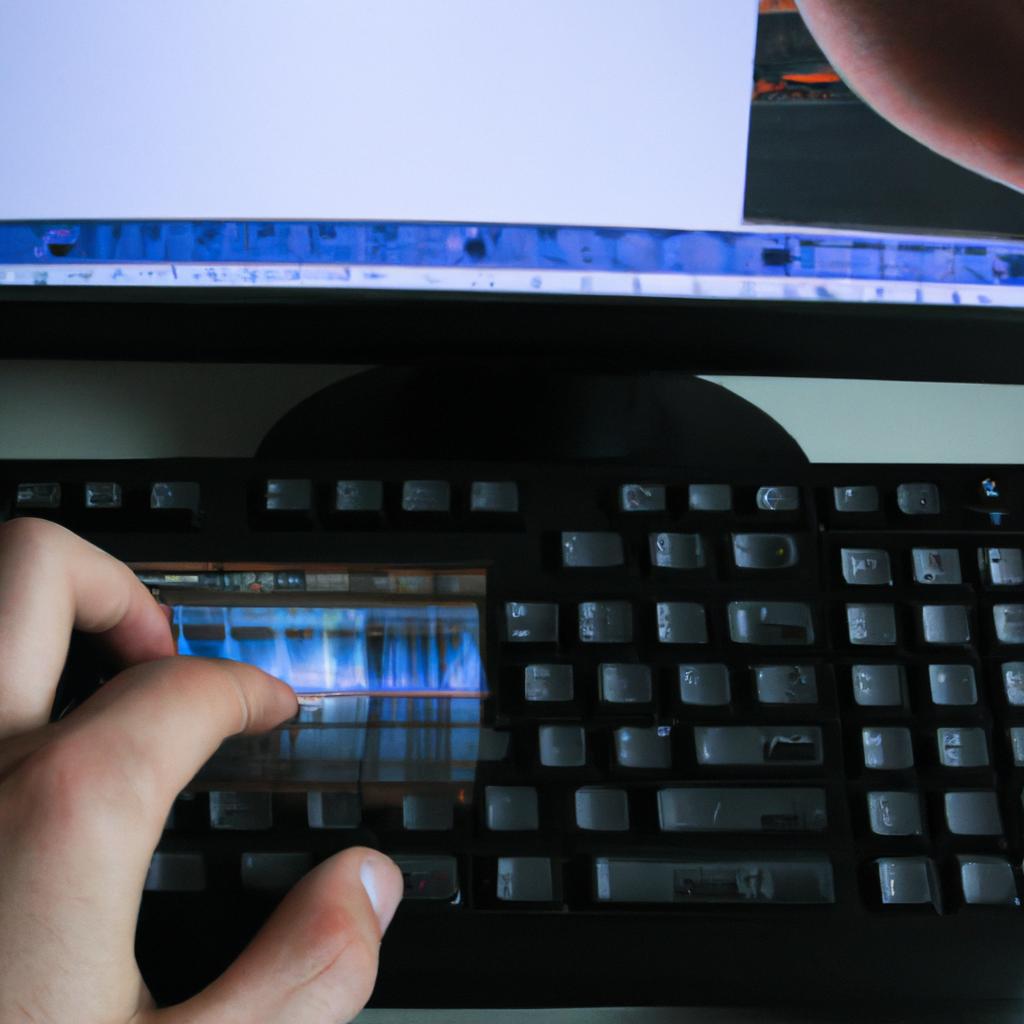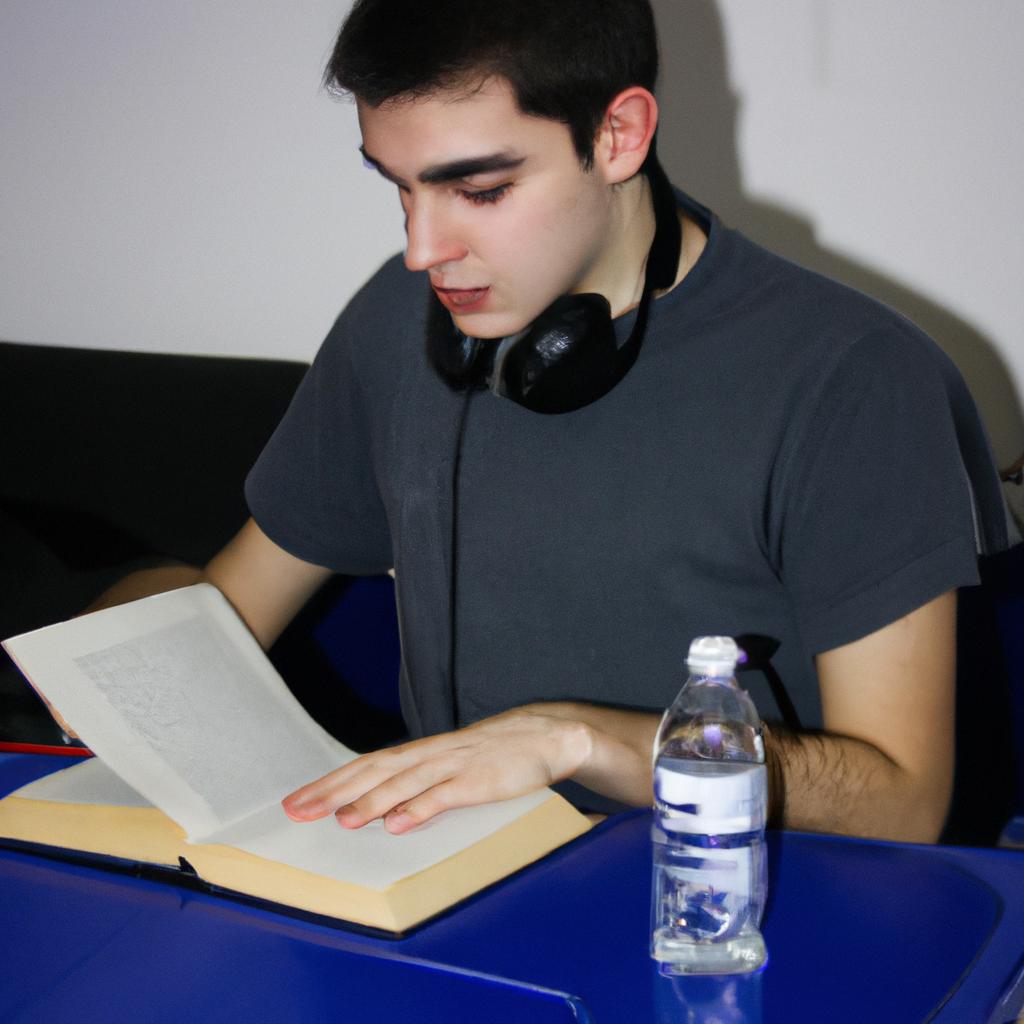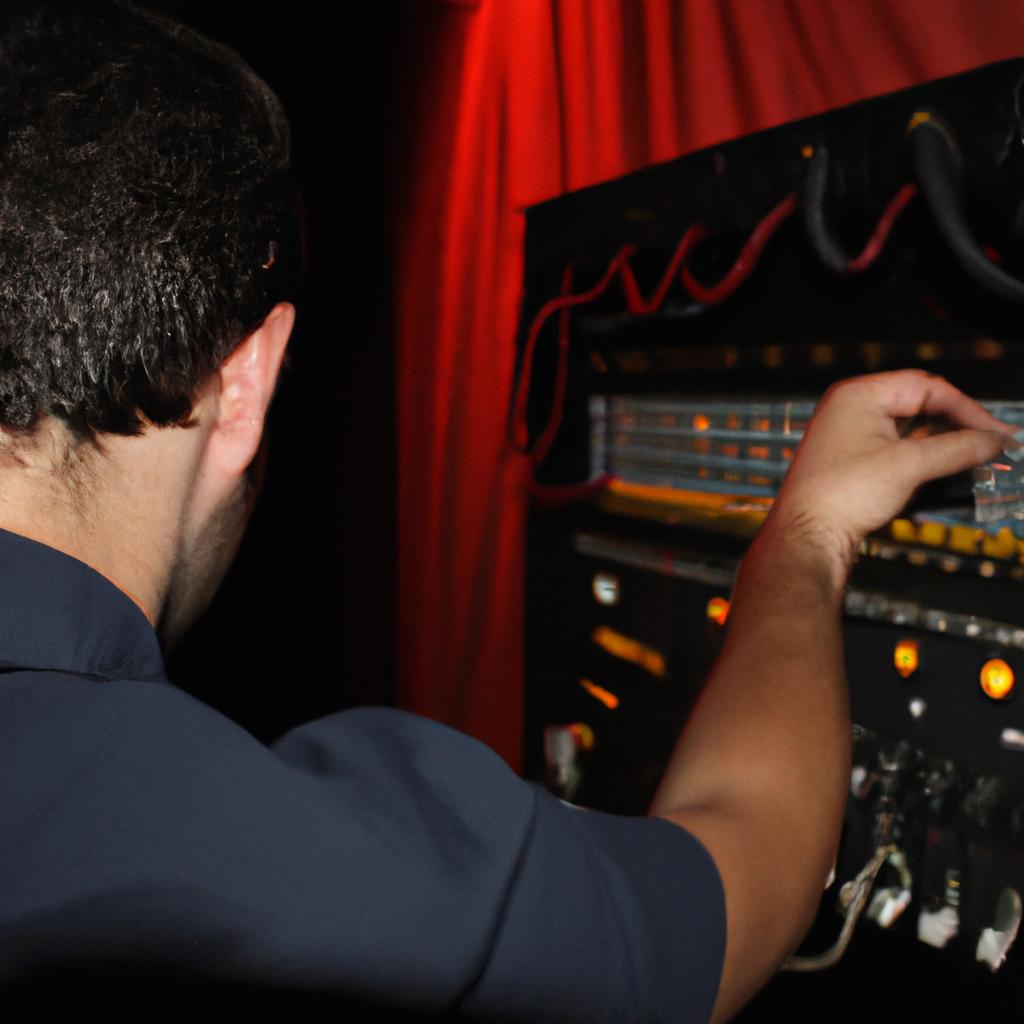Film editing is a critical aspect of the filmmaking process, playing a pivotal role in shaping the final product that audiences see on screen. Through the art of selecting and arranging various shots, film editors can transform raw footage into a cohesive narrative, enhancing storytelling techniques and evoking specific emotions from viewers. For instance, consider the case study of “Inception” directed by Christopher Nolan. The seamless transitions between dream layers and the precise timing of suspenseful moments were achieved through meticulous editing choices, further immersing audiences into the complex world of dreams within dreams.
The purpose of this comprehensive guide is to delve into the intricate world of film editing within arts and entertainment, providing readers with an in-depth understanding of its technical aspects as well as its artistic significance. By exploring topics such as shot selection, continuity editing techniques, pacing, rhythm, and visual effects integration, this article aims to equip aspiring filmmakers and enthusiasts alike with valuable insights that can enhance their appreciation for cinema. Additionally, it offers practical advice on how to approach editing projects effectively while incorporating elements like sound design and color grading to create a visually stunning cinematic experience.
Understanding the Role of a Film Editor
Film editing is an essential aspect of the filmmaking process, playing a crucial role in shaping the final product that audiences see on screen. By manipulating and rearranging footage, film editors have the power to enhance storytelling, create emotional impact, and ultimately bring together all the elements of a film into a cohesive whole.
To illustrate this point, consider the hypothetical case study of a suspense thriller. In one scene, the protagonist is being chased through a dimly lit forest by an unknown assailant. The tension builds as we see quick cuts between shots of the protagonist running frantically and glimpses of the pursuer closing in from behind. Through skillful editing techniques such as intercutting different angles and using close-ups to highlight facial expressions, the editor can heighten the sense of danger and keep viewers at the edge of their seats.
A key responsibility of a film editor is to ensure continuity throughout the film—maintaining visual coherence and smooth transitions between shots. This involves paying attention to details such as matching eyelines, spatial relationships, and consistent lighting or color grading across scenes. To demonstrate its importance more vividly:
- A bullet point list:
- Seamlessly transitioning between scenes helps maintain audience engagement.
- Consistent framing maintains visual clarity and aesthetic appeal.
- Smooth pacing enhances narrative flow and emotional impact.
- Effective use of sound design complements visuals for immersive storytelling.
In addition to these considerations, film editors also work closely with directors, cinematographers, sound designers, and other members of the production team to achieve creative vision. Collaboration is paramount in ensuring that each element aligns harmoniously within the overall structure of the film.
The next section will delve deeper into “The Importance of Continuity in Film Editing,” exploring how meticulous attention to detail contributes not only to seamless viewing experiences but also supports character development and story progression. Understanding these fundamental aspects allows us to appreciate the multifaceted role of a film editor and their impact on the final cinematic product.
The Importance of Continuity in Film Editing
Continuity is a fundamental aspect of film editing that plays a crucial role in maintaining the flow and coherence of a movie. It ensures that the visual and narrative elements are seamlessly connected, creating an immersive experience for the audience. One example highlighting the significance of continuity can be seen in Christopher Nolan’s thriller “Inception.” Throughout the film, there is a consistent use of cross-cutting between multiple dream levels, allowing viewers to follow different storylines simultaneously.
To achieve continuity in film editing, editors employ various techniques and strategies. These include:
- Shot composition: Ensuring that shots match each other in terms of framing, angle, and position within the frame. This consistency allows for smooth transitions between scenes.
- Continuity editing: Utilizing techniques like shot reverse shot and eyeline matching to maintain spatial awareness and logical progression within a scene.
- Matching action: Seamlessly connecting shots by ensuring continuity in actors’ movements or objects’ positions from one shot to another.
- Sound design: Using sound effects, background music, and dialogue to enhance continuity by providing auditory cues that connect different scenes.
Creating a table showcasing these techniques can provide readers with a clear visual representation:
| Techniques | Description |
|---|---|
| Shot composition | Ensures consistency in framing, angle, and positioning within frames |
| Continuity editing | Techniques such as shot reverse shot and eyeline matching help maintain spatial awareness and logical progression within scenes |
| Matching action | Seamless connection between shots through consistent actor movements or object positions |
| Sound design | Effective use of sound effects, background music, and dialogue aids in enhancing continuity by providing auditory cues that connect different scenes |
By incorporating these techniques into their work, film editors ensure that audiences remain engrossed in the storytelling process without being distracted by jarring cuts or inconsistencies. Continuity in film editing is not merely about maintaining visual coherence; it also contributes to the emotional impact of a movie by allowing viewers to immerse themselves fully in the narrative.
Transition into subsequent section:
As continuity forms the foundation of effective film editing, mastering another essential technique – montage editing – can further elevate the artistry and storytelling potential of films.
Mastering the Art of Montage Editing
Section: The Art of Continuity Editing
Continuity editing is a fundamental aspect of film editing that aims to create a seamless flow and logical progression of events within a film. By maintaining consistency in visual and narrative elements, continuity editing ensures that the audience can easily follow the story without being distracted by inconsistencies or disruptions. A notable example that highlights the importance of continuity editing is the classic film “Casablanca,” directed by Michael Curtiz.
In one particular scene, Rick Blaine (played by Humphrey Bogart) is seen holding a glass of whiskey while conversing with Ilsa Lund (played by Ingrid Bergman). As their conversation unfolds, the camera angle changes several times, capturing different perspectives of both characters. Despite these varied angles, careful attention is given to ensure that the position of the glass remains consistent throughout the sequence. This meticulous adherence to continuity allows viewers to focus on the dialogue and emotions conveyed between Rick and Ilsa, rather than becoming preoccupied with any sudden discrepancies.
To achieve successful continuity editing, filmmakers employ various techniques and strategies:
- Match cuts: These cuts involve seamlessly transitioning from one shot to another based on similarities in composition, action, or subject matter. Match cuts help maintain the flow of a scene while creating smooth transitions.
- Eyeline matches: By using eyeline matches, editors establish an unbroken line of sight between characters in consecutive shots. This technique enhances spatial coherence and reinforces connections between individuals within a scene.
- Shot-reverse-shot: Frequently employed during conversations or interactions between two characters, this technique alternates shots between each person as they speak or react. Shot-reverse-shot maintains continuity while emphasizing verbal exchanges and emotional responses.
- Juxtapositions: Editors utilize juxtapositions to draw contrasts or highlight similarities between shots through careful placement and timing. This technique adds depth to scenes and emphasizes thematic elements within a film.
| Technique | Description |
|---|---|
| Match cuts | Seamless transitions based on similarities in composition, action, or subject matter. |
| Eyeline matches | Establishing unbroken line of sight between characters in consecutive shots. |
| Shot-reverse-shot | Alternating shots between two characters during conversations or interactions. |
| Juxtapositions | Contrasting or highlighting similarities through careful placement and timing of different shots. |
By employing these techniques effectively, filmmakers can ensure continuity editing serves its purpose by creating a cohesive and immersive viewing experience for the audience.
Transitioning into the subsequent section about “Exploring Different Editing Techniques and Styles,” it is important to recognize that continuity editing is just one aspect of film editing. While it plays a vital role in maintaining consistency within a film, there are various other editing techniques and styles that contribute to the overall artistic expression of cinema. Understanding these diverse approaches allows editors to expand their creative repertoire while enhancing storytelling possibilities.
(Continued…)
Exploring Different Editing Techniques and Styles
In the world of film editing, there is a vast array of techniques and styles that editors can employ to create compelling visual narratives. Each technique serves a unique purpose and contributes to the overall storytelling experience. Let’s delve into some of these different editing techniques and styles.
One example of an editing technique is cross-cutting, also known as parallel editing. This technique involves alternating between two or more separate scenes happening simultaneously, creating tension or emphasizing connections between them. For instance, in the film “The Godfather,” director Francis Ford Coppola uses cross-cutting to juxtapose Michael Corleone attending his sister’s wedding with violent acts carried out by his family members elsewhere. This technique heightens suspense and underscores the duality of Michael’s character.
To evoke emotions effectively through editing, editors often utilize specific techniques such as:
- Montage: A series of rapidly edited shots assembled to convey information or condense time.
- Jump cuts: Abrupt transitions within a scene that disrupt continuity for stylistic purposes.
- Match cuts: Seamlessly connecting two shots based on shared visual elements like shape or movement.
- Slow motion: Slowing down footage to emphasize details or intensify emotions.
Additionally, certain styles have emerged over time that define entire genres or eras. One notable style is French New Wave cinema, characterized by unconventional editing techniques such as jump cuts and discontinuity in narrative structure. Another influential style is Soviet montage theory, which emphasizes the collision of images to generate meaning and provoke emotional responses from viewers.
Table: Emotions Evoked Through Effective Film Editing
| Emotion | Technique |
|---|---|
| Suspense | Cross-cutting |
| Excitement | Fast-paced montage |
| Surprise | Sudden jump cuts |
| Tension | Juxtapositioning shots |
These various techniques and styles demonstrate how powerful film editing can be in eliciting emotional responses from audiences. By carefully selecting the right technique or style, editors have the ability to enhance storytelling and captivate viewers.
Transitioning into the subsequent section about “Collaborating with the Director and Other Crew Members,” it is essential for film editors to understand their role within a larger team dynamic. Effective collaboration ensures that the editor’s vision aligns seamlessly with the director’s artistic intentions, resulting in a cohesive final product.
Collaborating with the Director and Other Crew Members
Section Title: Exploring Different Editing Techniques and Styles
Transitioning smoothly from the previous section, let us now delve into the fascinating realm of different editing techniques and styles employed in film editing. By examining various approaches used by editors to shape a film’s narrative and evoke specific emotions, we can gain a deeper understanding of this dynamic art form.
Imagine a scenario where an editor is tasked with assembling footage for a high-octane action sequence. To heighten the tension and maintain audience engagement, quick cuts, fast-paced edits, and dynamic camera angles are often employed. These techniques help create a sense of urgency and adrenaline, immersing viewers in the heart-pounding action on screen. Conversely, in a slow-burning drama or romance film, longer takes and seamless transitions between shots may be utilized to establish an unhurried rhythm that allows emotional moments to unfold naturally.
To further explore different editing techniques and their impact on storytelling, consider the following bullet points:
- Montage: The use of rapid successive cuts to condense time or convey information efficiently.
- Cross-cutting: Alternating between two or more scenes happening simultaneously to build suspense or draw connections.
- Match cut: Seamlessly transitioning between shots based on visual similarities (e.g., matching shapes or movement) to enhance continuity.
- Juxtaposition: Placing contrasting images side by side to emphasize differences or generate irony.
Reflecting upon these various methods brings attention to how editors manipulate visuals and sound elements within films. In addition to showcasing diverse techniques through textual descriptions, it is also helpful to present real-life examples using tables. Consider this table illustrating popular genres alongside corresponding editing styles:
| Genre | Editing Style |
|---|---|
| Thriller | Quick cuts, intense pacing |
| Comedy | Fast-paced timing |
| Documentary | Linear narrative |
| Fantasy | Seamless transitions |
As we continue our exploration of film editing techniques, it is evident that the choices made by editors play a pivotal role in shaping and enhancing the audience’s viewing experience. By skillfully combining shots, manipulating rhythm, and utilizing various editing styles, filmmakers can evoke specific emotions and immerse viewers into their cinematic world.
Moving forward, let us now turn our attention to the future of film editing – technological advancements that are revolutionizing this art form while pushing creative boundaries.
The Future of Film Editing: Technological Advancements
Building upon the collaborative nature of film editing, technological advancements have revolutionized the way editors approach their craft. These innovations have not only enhanced efficiency but also introduced new creative possibilities. In this section, we will explore the future of film editing and how technology is shaping its landscape.
The advent of advanced visual effects software has allowed editors to seamlessly integrate computer-generated imagery (CGI) into films, creating stunning visuals that were once unimaginable. For instance, consider a hypothetical scenario where an editor collaborates with a director on a science fiction film set in outer space. Through innovative CGI techniques, they can bring otherworldly landscapes to life, adding depth and realism to every frame.
Technological advancements have also resulted in increased accessibility to editing tools and software for aspiring filmmakers. This democratization of film editing empowers individuals from diverse backgrounds to tell their stories without being hindered by financial constraints or limited resources. Aspiring directors can now edit their own projects using user-friendly software like Adobe Premiere Pro or Final Cut Pro X, fostering creativity and nurturing talent within the industry.
- Expanding storytelling capabilities through virtual reality (VR) and augmented reality (AR).
- Enhancing collaboration between editors working remotely through cloud-based platforms.
- Streamlining post-production processes with artificial intelligence algorithms.
- Pushing boundaries with high-resolution formats like 8K for unparalleled visual experiences.
Additionally, here is a three-column table showcasing different technological advancements in film editing:
| Technological Advancement | Description | Impact |
|---|---|---|
| Non-linear Editing Systems | Digital systems allowing non-destructive editing | Greater flexibility in making changes |
| Color Grading Software | Tools for adjusting and enhancing the visual aesthetics | Enhancing mood, atmosphere, and overall storytelling |
| Motion Tracking | Techniques to track objects or subjects within a frame | Enabling seamless integration of CGI elements with live-action footage |
As technology continues to evolve at an unprecedented pace, film editing will undoubtedly experience further transformation. Editors must adapt to these changes while also preserving the core principles of their craft: storytelling and effective communication through visual language.
Through this exploration, we have witnessed how technological advancements offer new avenues for creativity and collaboration in the world of film editing. By embracing innovation while maintaining artistic integrity, editors can shape the future of cinema by pushing boundaries and captivating audiences worldwide.




